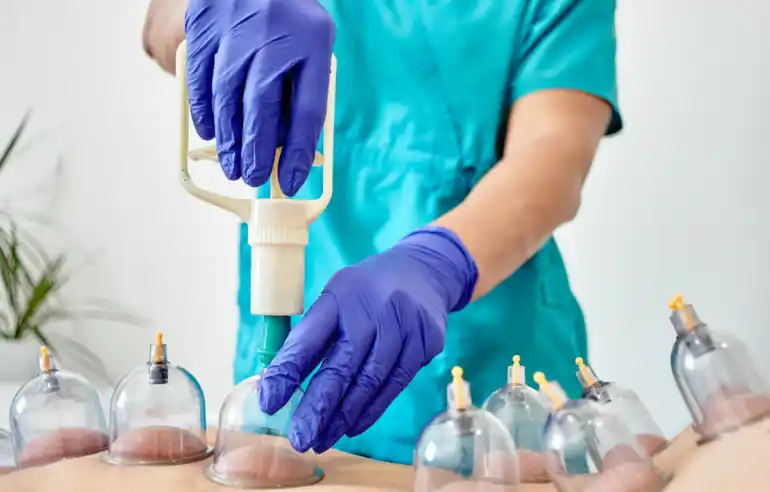Overview
Neck pain, medically known as cervicalgia, refers to discomfort or pain experienced in the neck region, which houses the cervical spine (C1–C7 vertebrae) and surrounding nerves, muscles, ligaments, tendons, and blood vessels. It’s exceptionally common: up to 10–20% of adults experience it at any given time, with women and older adults being more affected.
Neck pain can manifest acutely (lasting days to six weeks), subacutely (six to twelve weeks), or chronically (lasting three months or more). While many cases are benign and resolve with non-invasive care, persistent or severe symptoms should prompt medical attention.
Symptoms
Neck pain can present in a variety of ways depending on its source.
Typical musculoskeletal symptoms include:
1. Localized aching or stiffness in the neck muscles.
2. Sharp, stabbing, burning, or shooting sensations radiating into shoulders, arms, or upper back.
3. Reduced range of motion, such as difficulty rotating or tilting the head, or looking up/down.
4. Muscle spasms—sudden, involuntary contractions that can lock the neck temporarily.
5. Headaches, especially cervicogenic types originating from the neck.
6. Paresthesia: numbness, tingling, or pins‑and‑needles in the arms and hands—often due to nerve root compression.
7. Neurological signs: muscle weakness or diminished reflexes in limb muscles when nerve impingement occurs .
8. Clicking or grating sounds (crepitus) during neck movement—common and typically benign.
9. Dizziness or visual disturbances (rare): may arise from vertebral artery compression in advanced spinal degeneration .
What Causes Neck Pain?
Neck pain has diverse origins, often interconnected:
1. Muscle Strain & Poor Posture
- Sustained awkward positions—like leaning over screens, sleeping improperly, or repetitive activities—lead to muscle fatigue and strain.
- Forward head posture, increasingly prevalent due to smartphone/computer usage, places abnormal stress on neck and upper back muscles .
2. Degenerative & Structural Changes
- Osteoarthritis (cervical spondylosis): degeneration of facet joints and intervertebral discs that may cause bone spurs and nerve compression.
- Spinal stenosis: narrowing of neural canals, leading to nerve or spinal cord pressure.
- Facet syndrome: arthritic involvement of facet joints, causing dull pain and possible referred pain to shoulders or head.
- Herniated or bulging discs: disc material impinges on nerve roots → radicular symptoms like pain, numbness, or weakness .
3. Injury or Trauma
- Whiplash: abrupt neck extension/flexion from vehicle collisions causes muscle tears, ligament sprains, nerve irritation . Symptoms might present immediately or be delayed .
4. Stress and Tension
- Chronic stress leads to involuntary neck muscle contraction—triggering tension-type headaches and stiffness.
5. Less Common but Critical Causes
- Infection (e.g., meningitis), tumors, inflammatory arthropathies (like rheumatoid arthritis), or rare vascular conditions—should be ruled out if “red flags” emerge .
Diagnosis
1. Medical history : including onset, duration, triggers (injury, screen use), and associated symptoms.
2. Physical exam : inspections for posture, ROM, muscle tone; palpation to detect tenderness or spasms; neural screening (reflexes, strength, sensation) .
3. Imaging, used when serious pathology is suspected:
- X‑rays : structural alignment, arthritis, fractures.
- MRI : nerve compression, disc herniation, masses.
- CT scan: detailed bone assessment.
4. Electrodiagnostic studies: used when radiculopathy/myelopathy is suspected .
5. Blood tests: to detect infection or systemic inflammatory disease .
Conservative & Physiotherapy Management
Most neck pain cases respond favorably to conservative, non-surgical treatments:
1. Stay Active & Self‑Care
- Avoid bed rest—gentle movement promotes healing.
- Hot (after 48–72 h) and cold therapy (initial 48 h) help reduce inflammation and ease tension .
- OTC analgesics (NSAIDs, acetaminophen) for symptomatic relief .
2. Physiotherapy & Manual Techniques
- Soft tissue mobilization : massage, myofascial release, trigger point work to alleviate tight muscles .
- Joint mobilization/manipulation : gentle passive movements to restore range and reduce pain .
- Techniques like McKenzie method can help centralize pain and improve mobility.
3. Exercise Therapy & Postural Correction
- Stretching : lateral neck flexors, upper trapezius, pectoral muscles.
- Strengthening : deep neck flexors (e.g., longus colli), scapular stabilizers (rhomboids, lower trapezius)
- Postural re‑education : correcting forward head posture, ergonomics, and dynamic postural awareness .
- Home‑exercise programs : include chin‑tucks, scapular squeezes, resisted isometrics, thoracic extensions.
4. Accelerated Healing Therapy
- It is the most advanced technique that helps in repairing the damaged cells and promoting the healing process. It leads to decrease in pain and keep the joint healthy and functional.
- Heat/cold adjuncts, combined with exercise .
5. Dry Needling
6. Kinesio Taping
7. Education & Ergonomics
- Instruction on workstation setup, screen height, frequent breaks, and supportive pillows
- Training in stress reduction techniques such as mindfulness, diaphragmatic breathing, and CBT, to reduce tension‑induced pain .
Conclusion
At DMPhysios, patients benefit from a holistic, patient-centered approach to neck pain rehabilitation. The clinic combines advanced manual therapy techniques, posture correction, targeted strengthening exercises, and state-of-the-art treatments like dry needling, kinesio Taping , and accelerated healing therapy to accelerate recovery and promote long-term wellness.
DMPhysios also emphasize education and lifestyle modifications, ensuring that each patient understands how to avoid future flare-ups by correcting daily habits and ergonomic setups. Through personalized treatment plans and continuous support, DMPhysios empower patients to regain function, reduce pain, and return to their active, pain-free lives with confidence.
If you’re experiencing neck discomfort or chronic cervical issues, consult DMPhysios today and take the first step toward a healthier, stronger, and more mobile neck.









